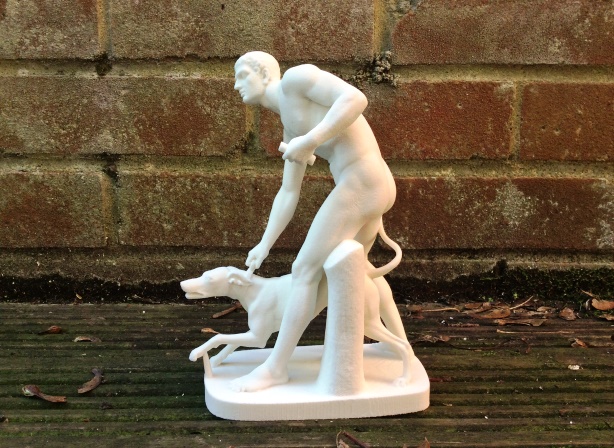For the past two years Museofabber has been working to provide educators with physical, touchable access to the diverse knowledge from our material cultural heritage. By using physically touchable 3D printed museum artefacts Museofabber believes educators can communicate their learning objectives better. While at the same time, it will enable museums to monetise their 3D cultural content and harvest the financial benefits of a new revenue stream while accelerating their social and education impact.
Museofabber.com is doing this by seeking opportunities to license 3D models of museum collections and develop custom branded e-commerce applications that sell 3D print-on-demand artefacts. Museotechniki, its parent company, undertakes all the business processes – order management, 3D printing, fulfilment – on behalf of the museum and it pays them for the license fees.
The Museofabber service is primary focusing on the educational value of the touchable 3D printed artefacts. Building on the museums' knowledge associated with the educational use of collections (for example museum educational kits and artefact handling sessions) and the proven content demand from schools, Museofabber aims to enhance object based learning by bringing touchable representations of museum artefacts into the classrooms and beyond the museum walls.

“Museofabber is working to develop and optimise a global network of professional 3D printing ‘factories’ in order to provide high quality 3D printing with fast a turnaround production and delivery time,” said Nikolaos Maniatis, Founder & Managing Director of Museotechniki, which an open innovation and knowledge management company.
Museofabber has been conducting a number of tests and evaluations on 3D model processing techniques, 3D printing technologies and materials in order to develop a cost effective production work-flow.
“3D printing will eventually be as common as regular printing in the next five to 10 years and everyone will be able to access the revolution at an affordable cost.”
Museofabber is confident that digital and on-demand manufacturing is changing the way we share and communicate 3D cultural content. It also believes that 3D printing technologies are providing museums with the opportunity to share physical access to digital archives. Going forward it envisages 3D printed artefacts providing better access to the form and physical look of artefacts in similar way that photography provides access to the 2D appearance of artefacts.

“3D printing is enabling the emergence of a new publishing industry where the disseminated information is three dimensional.”
The big challenge facing Museofabber is the copyright of objects, who owns the 3D data and under what terms museums are willing to license their content. Another big barrier for museums is that existing 3D scanning technologies have been expensive and time consuming. However, recent advantages in these field have made 3D scanning more affordable and towards the end of the year Museofabber hopes to have its first fixed licensing contracts in place.
Back to top




